1. Meaning:
dog
2. Readings:

- Kunyomi (訓読み): いぬ
- Onyomi (音読み): ケン
- Japanese names: does not appear in Japanese names
- Chinese reading: guǎn
3. Etymology
犬 belongs to the 象形文字 (しょうけいもじ, shōkeimoji, i.e. set of characters of pictographic origin). It is a pictograph of a dog.
According to 說文解字 (shūo wén jiě zì, i.e. “Explaining Simple Characters and Analyzing Compound Characters”), by a philologist 許慎 (Xǔ Shèn, ca. 58 C.E. – ca. 147 C.E.), the character 犬 represents a dog with concealed claws. It should be noted that 說文解字 was a book written before the discovery of oracle bone script (甲骨文, こうこつぶん, kōkotsubun) in 1899, and therefore its etymological explanation does not include oracle bone forms analysis, where in some of them the claws were clearly exposed (see Figure 1). Oracle bone script texts were written on various subjects including official affairs, warfare, festivals, etc., but also hunting expeditions. Those hunting expeditions involved hunting dogs, hence the common appearance of this character, and its multiple forms. Also, in the same book we read that the 犬 character was often found on round bronze tripods, and the inscriptions were related to religious rituals.
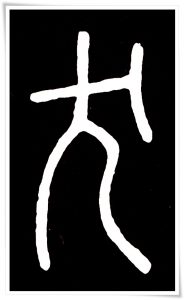
According to the compilation on a subject of the kinbun (金文, きんぶん, i.e. “text on metal”) script of Yin (Shang) (殷代, 1600 – 1046 B.C.) and Zhou (周朝, 1046 – 256 B.C.) dynasties, entitled 近出殷周金文集録 (Chinese: Jìn chū Yīn Zhōu jīn wén jí lù), two skeletons of dogs with gold and silver necklaces around their necks were discovered in 中山王墓 (Chinese: Zhōng shang wáng mù), the grave of the kings of the 中山國 (Chinese: Zhōng shang guó), a kingdom from the Warring States period (戰國時代, Chinese: Zhàn guó shí dài, 475 – 221 B.C. ) in China, whose grave was located in the capital city of 中山國.
Sacrificing dogs was quite popular in the Shang and Zhou dynasties, especially during religious festivals. Their blood was used for cleansing sacrificial containers, and then for ritual purposes, such as smearing of the diviners with blood or other ways of offering it to the gods of heavens. It is not a coincidence that 獻 (Chinese: xiàn, i.e. “offer”) has the 犬 radical as a character forming compound.
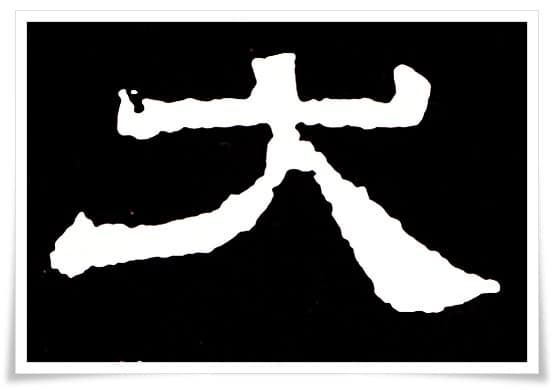
4. Selected historical forms of 見.
Figure 1. Ink rubbing of the oracle bone script (甲骨文, こうこつぶん, kōkotsubun) form of 犬, from ca.1600 B.C. – 1200 B.C.
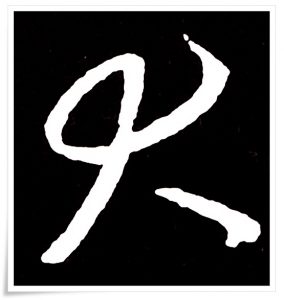
Figure 2. Seal script (書篆, しょてん, shoten) forms of the character 犬, found in the book entitled 說文解字 (shūo wén jiě zì, i.e. “Explaining Simple (Characters) and Analyzing Compound Characters”), by the philologist 許慎 (Xǔ Shèn, ca. 58 C.E. – ca. 147 C.E.)
Figure 3. Ink rubbing of the Clerical script (隷書, れいしょ, reisho) form of the character 犬, found on the stele 乙瑛碑 (Chinese: Yǐ yīng bēi) erected during the late Han dynasty (後漢, 25 – 220 C.E.), 153 C.E. The 乙瑛碑 stele is an example of matured clerical script, also referred to as happun rei (八分隷, はっぷんれい, lit. “eight parts slave (script)”).
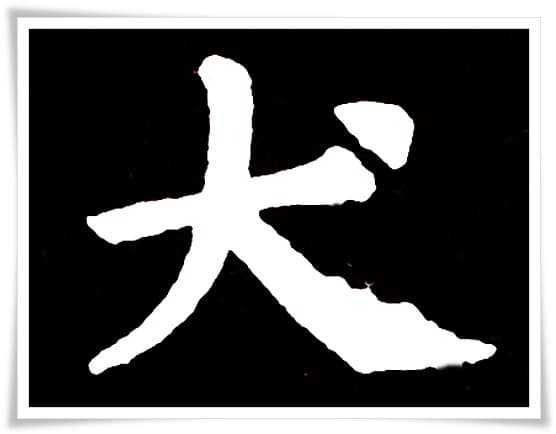
Figure 4. Ink rubbing of the Cursive script (草書, そうしょ, sōsho) form of the character 犬. Ink rubbing from the stele entitled 澄清堂帖 (Chinese: Chéng qīng táng tiē). Although it is said that this stele was erected during the Tang dynasty (唐朝, 618 – 907), the calligraphy it is based on is attributed to 王羲之 (Wáng Xīzhī,, 303 – 361 C.E.) of the Jin Dynasty (晉朝, 265 – 420 C.E.), who is often referred to as the Sage of Calligraphy (書聖; Chinese: shū shèng).
Figure 5. Ink rubbing of the standard script (楷書, かいしょ, kaisho) taken from the stele 圭峯禅師碑 (Chinese: Guī fēng chán shī bēi) erected in 855 C.E. during the Tang dynasty (唐朝, 618 – 907 C.E). The text was composed and written by the high ranking politician and calligrapher 裴休 (Péi Xiū, 791 – 864).
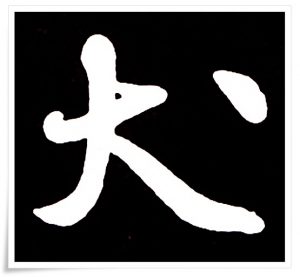
Figure 6. Semi-cursive script (行書, ぎょうしょ, gyōsho) script of the character 犬. Ink rubbing from the calligraphy attributed to the calligrapher poet and ink painter 黄庭堅 (Huáng Tíngjiān, 1045–1105) of the Song dynasty (宋朝, 960 – 1279).
5. Useful phrases
- 子犬 (こいぬ, koinu) – little dog, puppy
- 忠犬 (ちゅうけん, chūken) – faithful dog
- 猟犬 (りょうけん, ryōken) – hunting dog
- 盲導犬 (もうどうけん, mōdōken) – guide dog
- 飼い犬 (かいいぬ, kaiinu) – house dog
